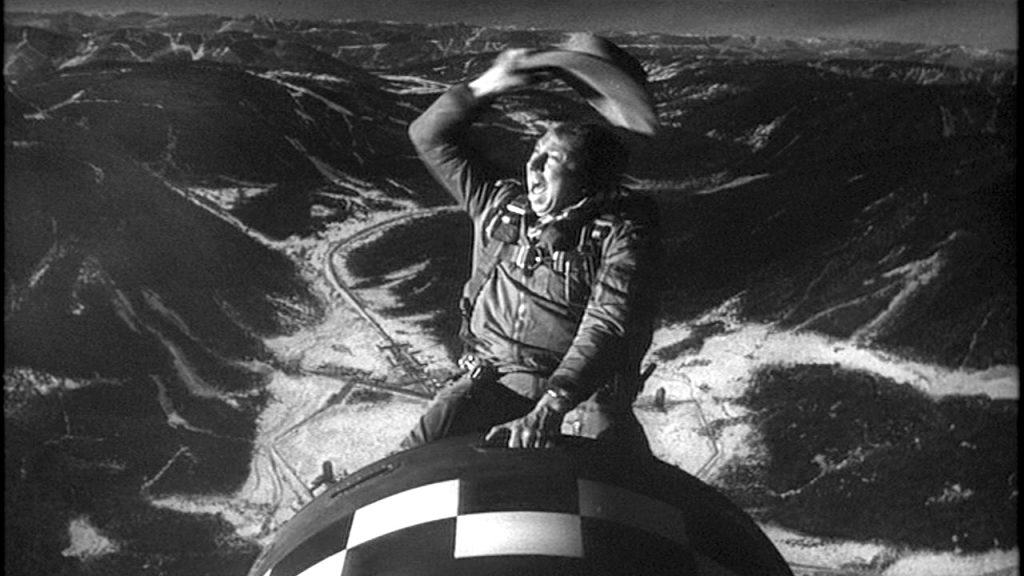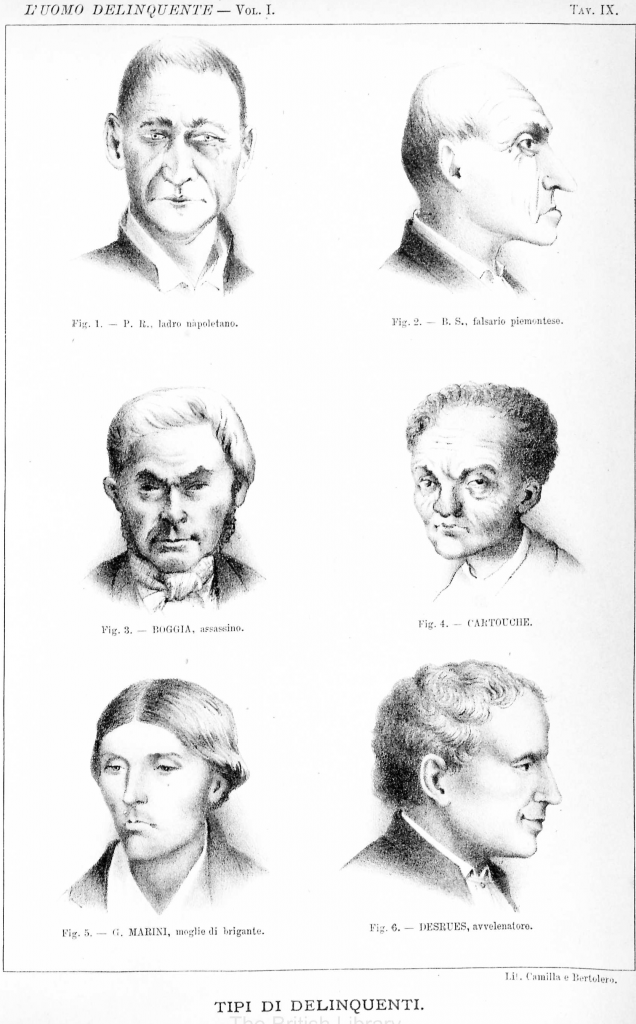The third issue of the journal L’Età del Ferro has just been released. In it I published the following text, responding to the harsh criticisms opposed to the assumption of neurocognitive perspectives in the study of literature, and more in general to the most recent development in the field of humanities, contained in the journal’s previous issue. The complete title of my intervention sounds Doctor Strangelove or: How I Learned to Stop Worrying and Love the Humanities.
Category Archives: 17th Century
Oracles
I participated in the organisation of the project Oracoli. Saperi e pregiudizi al tempo dell’Intelligenza Artificiale, designed by the publisher Luca Sossella Editore with Emilia Romagna Teatro Fondazione and Unipol Gruppo. It is a series of lectures on the philosophical, historical, social, ethical and economic challenges connected to the emergence of artificial intelligence. I designed and edited a journal describing the project and expanding the reflection around the main issues it will address.
I also published an article in the online magazine CheFare, Oracoli’s partner, discussing how literature over time diversely imagined possible extensions, evolutions, empowerments and re-creations of the human mind and body. Continue reading
Caricature as emotional knowledge
I publish here the talk I’ve given at the Mis-Shapings conference last September 13 at Queen Mary University.
Do we believe in physiognomy? Do we believe, as the Italian anthropologist Cesare Lombroso did, that psychological, emotional, moral attitudes of the individuals can be divined by observing the shape and features of the face?
No, of course we don’t. Physiognomy is pseudo-science, dismissed knowledge, superstition. We can’t make assumptions merely relying on appearances. Can we?
Actually, we do. We do it in our daily life, often unintentionally. But even when we look at artworks we allow us to believe in physiognomy. Continue reading
Mis-Shapings
On Thursday 13th September 2018 will take place at Queen Mary University of London (Mile End Campus, Arts One Building, Room 128) the international conference Mis-Shapings. The Art of Deformation and the History of Emotions. I’m organising the conference, as coordinator of the Marie Skłodowska-Curie research project Misshaping by Words, in association with the Queen Mary Centre for the History of Emotions.
Concept
A well established and long-standing bond exists between the representation of the forms and postures of the human figure and the expression of emotions. But how does this change when the body represented is deformed or mis-shapen? This is a question that an interdisciplinary range of scholars, covering a wide chronological period that extends from the Renaissance to the 20th century, will explore in the one-day Mis-Shapings conference.
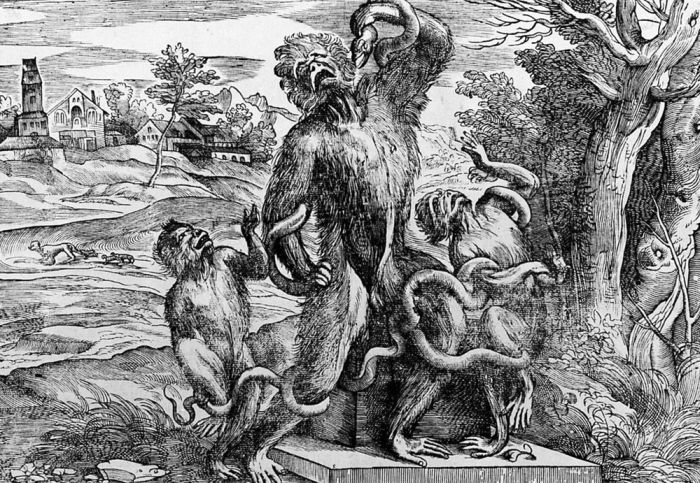
Niccolò Boldrini, Caricature of the Laocoon, after Titian, 1540
Mis-Shapings: abstracts
Here are brief descriptions of the papers that will be presented next September 13th at the Mis-Shapings conference.
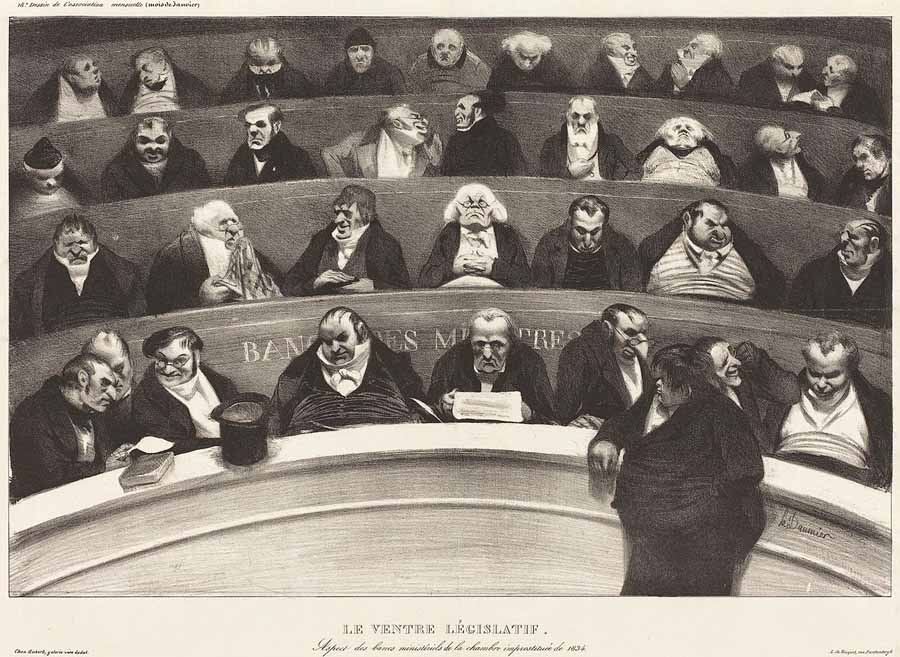
Honoré Daumier, Le ventre législatif, 1834
Mis-Shapings: speakers
Here are the bio-bibliographical profiles of the Mis-Shapings conference‘s speakers.
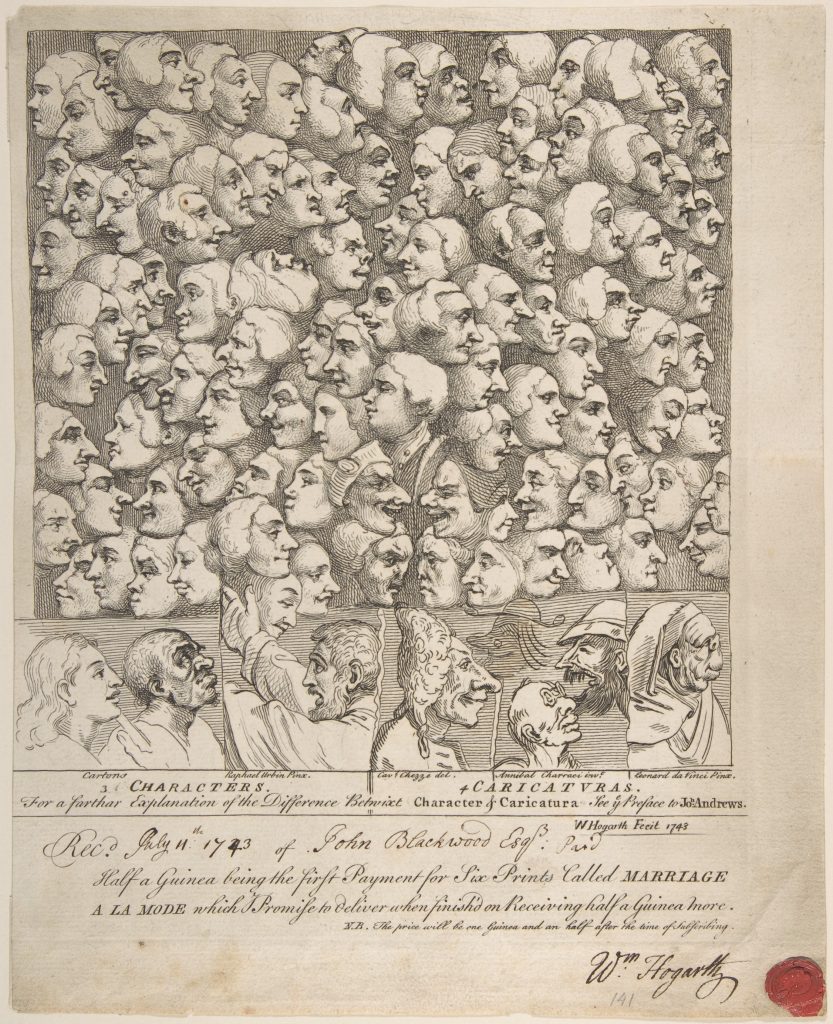
William Hogarth, Characters and Caricaturas, 1743
Marino: a cosmic self-portrait

Frans Pourbus the Younger, Portrait of Giovanni Battista Marino, 1619, Detroit Institute of Arts. Source: Wikimedia Commons, public domain.
In his sonnet Sul proprio ritratto (di mano di Bartolomeo Schidoni) – published in 1620 within La Galeria, a collection of poems conceived as descriptions of, and dialogues with, figurative artworks – Giovan Battista Marino suggests that to depict his portrait a painter should employ the harshness of ice and fire, the terror of the shaded dark of night, the paleness of death, the imperfection of nature, and colours sharpened with whispers and tears. Continue reading
«Orlando Furioso» and caricature
At the beginning of the 17th century, the painter and engraver Antonio Tempesta realised a series of six caricatures inspired by the characters of Ludovico Ariosto’s Orlando furioso. Tempesta reveals the comic potential of Ariosto’s work by applying deformation not to the figures that Ariosto had already represented as comical, but to the characters which in the poem are examples of perfection and beauty. The visual interpretation both translates and extends the humoristic imagination entailed in Ariosto’s work.
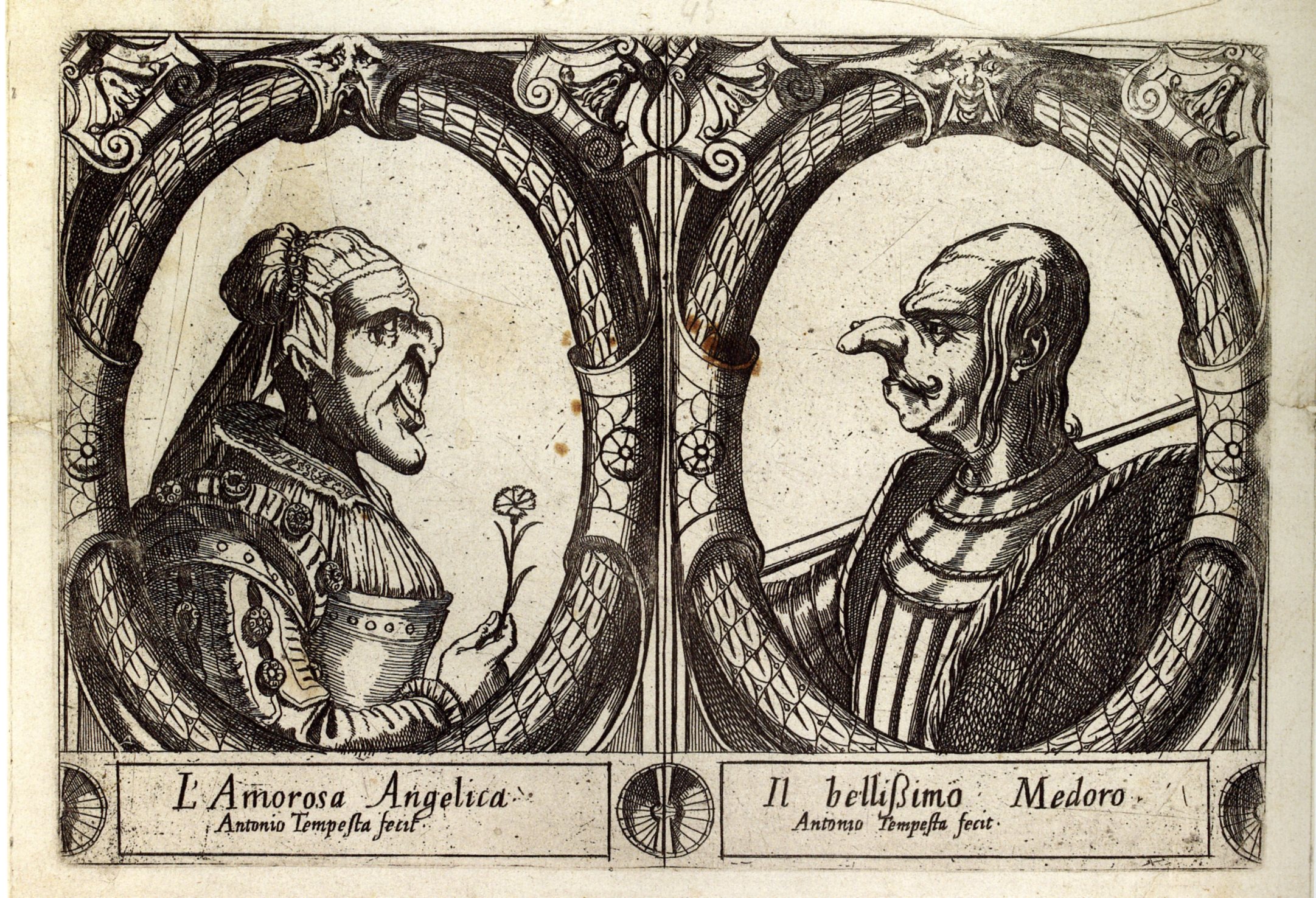
A. Tempesta, L’amorosa Angelica e Il bellissimo Medoro, 16th/17th Century. Source: Wikimedia Commons, public domain.

